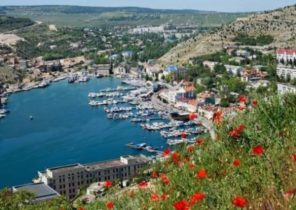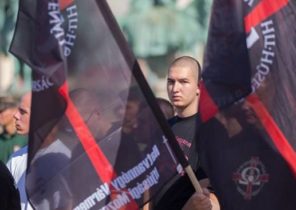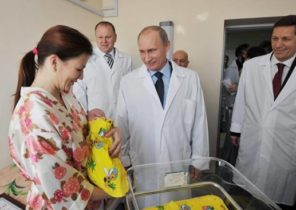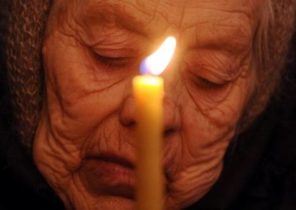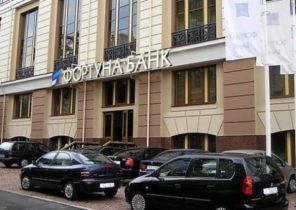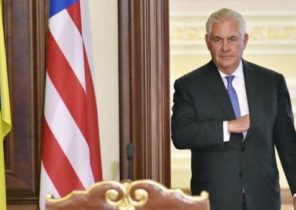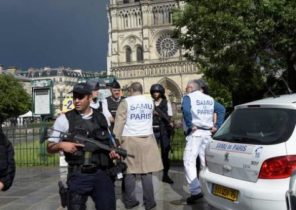
One who is looking for analogies in history, may appeal to the twentieth century. “The age of extremes” offers us a vocabulary to describe neobratimost of our time. One such borrowing from the past is a “show trial”. Whether the case against Ukrainian pilot Nadia Savchenko or wave of litigation caused by the coup attempt last year in Turkey, wherever jurisdiction should be politically motivated, we denounce all as a rude theatrical performance the authoritarian regime, as a “show trial”.
A historical example of this concept is noted by now your terrible anniversary. 23 Jan 1937, Soviet chief Prosecutor Andrei Vyshinsky, began the trial against the “anti-Soviet Trotskyite centre” is the second of the three “Moscow trials.” Our view of the demonstration trial begins here, in the bright October hall of the Moscow House of trade unions.
On the dock were the former elite of the Soviet Union. The revolutionaries of the first hour, the companions and rivals of Stalin, leaders of the highest rank. They were all accused of conspiracy against the Soviet Union. And they all pleaded guilty in the sight of the world community. Lev Kamenev and Grigory Zinoviev were once the close associates of Lenin. At the first show trial (1936) they confessed to a conspiracy with Nazi Germany. Now, said the writer, Karl Radek, a colleague of Rosa Luxemburg, that he was a member of one of the “Trotskyist” terrorist cells. Georgy Pyatakov was Deputy people’s Commissar of heavy industry. On the court, he said, for the record, was ordered to organize the disaster in the mines and the derailment to persuade the Soviet workers to the counter-revolution.
Three public trial for 18 months from 54 defendants, and each next time the public Prosecutor’s office exposed the all-new conspiracies, covert meetings with foreign secret agents, conspiracies to murder. “Midwives” of the Soviet Union literally created an incredible network of terrorists, which every confession became more and more implausible. Some pulled their confessions, others begged for forgiveness to the Almighty party leader Stalin. But still everyone played and recognized its role as the artful conspirators. Of course, any such “confession” was obtained through torture. Speeches of the defendants were rehearsed constantly, and who did not follow the script, expect even more terrible repression to him and his family. Who followed the script and pled “rabid dog” and was abused by the chief Prosecutor, could count on a speedy execution. 47 times howled a death sentence. Seven expect the GULAG.
Many Western observers had no illusions about this performance. One correspondent of the London Times commented on the beginning of the second process: “the Task of the judge is not to measure the degree of guilt or innocence, but to interpret the will of Stalin on how to get rid of the perpetrators.” George Kennan (George F. Kennan) remembered in twenty years, the third process as a “war cry hypochondriac Russia against the imaginary enemies abroad”. For the American diplomat from the U.S. this trial was first of all another proof of Soviet paranoia.
The Soviet regime had actively destroyed the last vestiges of potential intraparty opposition, and the rest of the world looked upon it with horror or delight. Politically motivated trials in 1937 and so was not something new. Since the revolution the Bolsheviks used the courtroom as a stage for execution of “class enemies”. Nazi justice also repeatedly gave the public reason to question its degrading submission on the law and not the law. And yet Moscow has eclipsed all processes known so far.
On the one hand, it was workshops advocacy work. Stalin’s chief Prosecutor, Andrei Vyshinsky, to manipulate the perceptions of millions, while it is their fears made the chief motive of his performance. The fear that night you can pick up the secret police in the mid 1930-ies was widespread. NVKD stretched its tentacles in all spheres of society to any expression of opposition or ideological instability to be uprooted from the root. A joke about the party, the dispute with the Director or just a case — it was enough to fall under its scope. Day and night people denounced as “enemies of the people” and arrested. Of course, no one had confidence in the security. There was only the assurance that the one who told on you, and soon he will be arrested as an “enemy of the people”. Moscow trials fueled this paranoia. Vyshinsky directed a national media event, which the audience was reminded that it is in the center of an epic struggle for existence. On the radio, in Newspapers, on production meetings or in the school heard the news: the hunt for “enemies of the people”, “wreckers.” “sycophants”, “spies” or “saboteurs” must continue. “Trotskyite” terrorist network was beheaded, but not destroyed. The front line of the international class struggle took place in the courtroom, in the enterprise and in the family.
On the other hand, those trials was a demonstration of power. In this case it was less about power over political opponents. The Supreme court demonstrated the superiority of Stalinist justice. Soviet justice was a sharp instrument of power in the hands of the party, but it was not a blind tool. She gave meaning to and followed their own legal logic. Each element of these processes — from the accused and their salonisti before the presentation of manipulated evidence, also serves the legal purpose. Vyshinsky gave the world to try this interpretation of Soviet law.
On the question of the court Chairman at the third Moscow trial about that would not want the defendants counsel, mentioned the total no. Only the former people’s Commissar of forestry Vladimir Ivanov added: “I do not intend to defend. I am here to suffer the full punishment for their crimes.” The wine was not what this court had to thoroughly prove. Such illusions do not have anybody. Of course, were spectacular, cross-examination, however, the result was known to all viewers and listeners: the Soviet government exposed the 54 guilty of the conspirators who are here to testify. Western observers have solved the drama process. However, Vyshinsky, and so would not follow the Western justice. In the Soviet Union acted other private standards. To the question about wine answered by the secret police, the court provided the history and punishment. Evidence had pedagogical value to represent the truth that the party leadership has identified for the population. It was all solid component part justice.
The Bolsheviks were not anarchists. Codified and binding social norms was necessary for the industrial countries. Right it pass state inspection. The scope of these rules depended, however, on the veto of the party leadership. It was determined when the policies were in effect and when not. Public outrage did not last long, and was a resource that could be used against dissidents and undesirable persons. This applies to all who was to blame for the known article 58 “contrrevolution” crime. Who appeared before the court as a “political” that have lost substantial rights and claims. It was not a legal loophole, and the deliberate reverse side of the Soviet legal order. Who is in front of the secret police (or neighbor) crossed the red line, he was a criminal without a trial.
Vyshinsky himself gave his audience in the second process to understand that such people are undesirable, it is impossible to rely on written evidence. The question of the “material traces” was — according to him —is simply absurd. “No sane person can not in court for anti-state conspiracy to raise the question”. As soon as there is suspicion that addressed the public interest, then immediately legal wine in the Soviet Union became a question of political dimension.
Attacking your own basic forces of democracy to be careful to use legal means of the state to cater to the law, not the government. This dilemma the Bolsheviks did not know. Power and law were equal, because both were in the hands of the party. It could eliminate political threats to all freedoms. Vyshinsky saw this as a superiority of the Soviet legal order, as historians justify the murder of millions.
Anniversary of the Moscow processes reminds us to take seriously the theatrical productions of the dictatorship. “Show trials” of Stalin manipulated millionth audience and postulated its own world order — with his truth. This misconception has cost countless lives, not just the accused. In addition, it is a reminder to us to welcome disagreements between the government and the law. Democracy needs its integrity to protect and constantly problematize. Safety needs discussions and legal state in the rules, not the tools.
